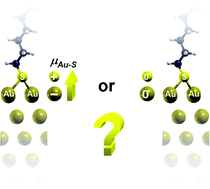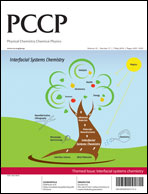Is there a Au–S bond dipole in self-assembled monolayers on gold?†
Abstract
Self-assembled monolayers (SAMs) of functionalized thiols are widely used in organic (opto)electronic devices to tune the work function, Φ, of noble-metal

- This article is part of the themed collection: Interfacial Systems Chemistry: Out of the Vacuum, Through the Liquid, Into the cell

 Please wait while we load your content...
Please wait while we load your content...